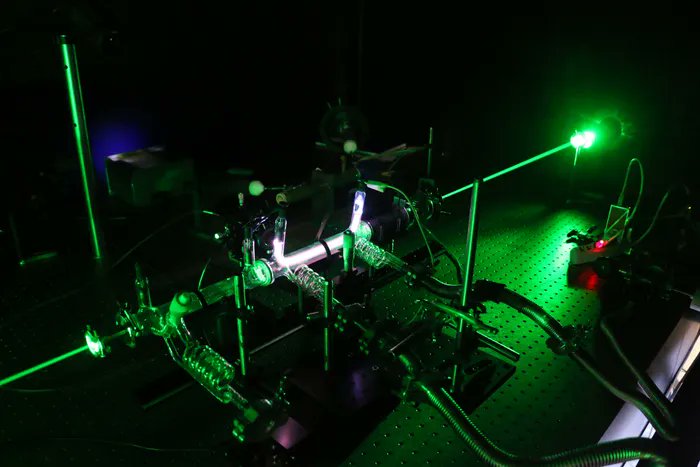There’s more than one way to produce oxygen on Mars. Or at least there is now. After the success of the MOXIE experiment that rode along with Perseverance to the red planet in 2021, another idea to produce one of the most useful gases in the universe has been experimentally proven by an international team of researchers. And they could potentially do it on Mars itself.
So why might researchers be looking for an alternative after the widely reported success Mars Oxygen In-Situ Resource Utilization Experiment (MOXIE)? A few technical reasons make MOXIE a less than ideal solution on another world. MOXIE is based on the concept of solid electrolysis cells, which, while they are undoubtedly effective at breaking carbon dioxide into oxygen, do it in particular environmental conditions.
Their temperatures have to reach over 1000 K, and the pressure inside the chamber has to be at least 1 bar. While such relatively low pressures might not seem like a concern on Earth, they certainly are on Mars, where the atmospheric pressure is only about 6.5 millibars – less than 1% of the pressure needed for MOXIE to operate properly.
In practice, the MOXIE system requires large, cumbersome heaters and pumps to force the necessary environmental conditions on an atmosphere that typically lies far outside those values. And, as with all things in space exploration, those pieces of large, cumbersome equipment come at a significantly increased cost in terms of the mass needed to get off of Earth.
While Perseverance’s MOXIE experiment was a success, scaling it up would be challenging, requiring 25 kW of power to create enough oxygen to support only two astronauts. That is equivalent to slightly less than what the average power an American household uses in a day – and that power consumption is strictly just to create breathable oxygen.
Other problems abound, from fouling of the electrolysis cell with the carbon that is the other by-product of this reaction, to the likelihood of Martian dust clogging the intake pumps. There are so many known problems with MOXIE that NASA recently invested in at NIAC program that would try to eliminate some of them.
But a new paper utilizes an entirely different approach. Utilizing a “cold plasma,” this system attempts to separate the dissociated oxygen from the carbon monoxide left over after the atoms are split. That O2 could then be siphoned away by a system such as a mixed electronic-ion conducting membranes.
These relatively new materials are still under active development, but their combined use with low-temperature plasmas has been a subject of particular interest. Plenty of factors would go into the design of any functional system, such as the “residence time” of the CO2 in the plasma – or how long the gas is subjected to the plasma before the oxygen is pulled out of it.
Those decisions can result in more than just a standard oxygen-generating machine. Plasma-based oxygen creation systems could be made small enough to be portable by an individual astronaut, allowing them to walk in the Martian atmosphere without needing to carry around a potentially explosive O2 tank. In addition, different types of plasma and gas configurations could result in nitrogen fixation techniques that could be critical to any future farming on the red planet.
There’s still a long way to go before humans breathe any oxygen on Mars created by a cold plasma system. But this proof of concept paper is a step in the right direction. And it may have an impact closer to home as well – any way to safely and cheaply remove carbon dioxide from Earth’s atmosphere would attract the attention of many governments and non-profits right now, so maybe the immediate future of this technology will lie closer to home.
Learn More:
American Institute of Physics – Harvesting resources on Mars with plasmas
Guerra et al – Plasmas for in situ resource utilization on Mars: Fuels, life support, and agriculture
UT – Mars Explorers are Going to Need air, and Lots of it. Here’s a Technology That Might Help Them Breath Easy
UT – Perseverance Successfully Extracts Oxygen From the Martian Atmosphere. About 10 Minutes of Breathing Time for an Astronaut
Lead Image:
Plasma created to dissociate CO2 in the current research.
Credit – Olivier Guaitella

